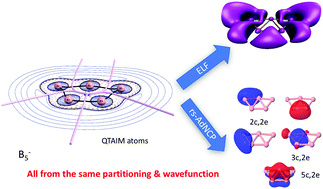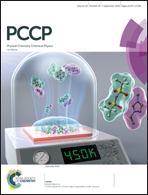From quantum fragments to Lewis structures: electron counting in position space†
Abstract
An electron counting technique that easily provides Lewis structures from real space analyses of general wavefunctions is proposed. We base our approach on reformulating the adaptive natural density partitioning (AdNDP) algorithm proposed by Zubarev and Boldyrev (Phys. Chem. Chem. Phys., 2008, 10, 5207) in position space through the use of domain-averaged cumulant densities, which take into account many-electron correlations. Averages are performed over the basins provided by the quantum theory of atoms in molecules. The decomposition gives rise to a set of n-center, two-electron orbitals which describe the dominant Lewis structures of a molecular system, and is available both for single- and multi-determinant wavefunctions. As shown through several examples, chemically intuitive Lewis descriptions are now available from fully orbital invariant position space descriptors. In this sense, real space methods are now in a position to compete with natural bond order (NBO) orbital procedures without the many biases of the latter.

- This article is part of the themed collection: 2018 PCCP HOT Articles


 Please wait while we load your content...
Please wait while we load your content...